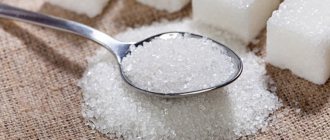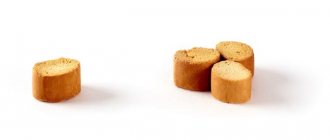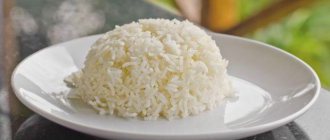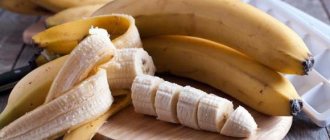The harm and benefits of jam
Some believe that it is empty calories with a lot of sugar, others believe that it is a healthy dessert, a few spoons of which are necessary for the body. To some extent, there really is some benefit. It contains pectin (especially in apple, plum, apricot and blackcurrant), which can inhibit the growth of cancer cells, vitamins PP, B1, B2 and E (preserved after proper cooking). By the way, due to the fact that vitamin C is destroyed during cooking, it is better to grind black currants with sugar. For anemia, you should try apricot jam, and for kidney diseases, pear jam.
People with low acidity in the stomach will benefit from jam. The acids contained in the dessert will stimulate the production of gastric juice, which will lead to an increase in appetite. It is also a whole storehouse of fiber, which slows down the growth of cholesterol.
However, don't forget. that most jams that can be found on store shelves contain at least 50% sugar. It is tasty, but at the same time very high in calories (260-340 kcal). If you add less sugar, you can reduce the energy value by at least half.
Those who have diabetes, ulcers or high stomach acidity should not eat this dessert. Also, do not forget that, due to the high sugar content, jam can destroy enamel.
If you make your own jam, make sure there is no mold left on it. To do this, you need to tighten the jar properly so that a vacuum forms inside. In this case, you should not use the methods of our grandmothers: cover the package with a lid without the help of a seaming key. Wait until the jar has cooled and cover the neck with paper soaked in alcohol or use a special tool.
Is it useful?
Those who have been reading us for a long time will not be at all surprised by the following words: everything that fits into your mouth is useful. Yes, we think so. No, we are not fools. The increased caloric content of food does not make it harmful, the presence of sugar in it does not make it a drug, and the percentage of fat content higher than 5% does not turn it into a killer.
We are diligently trying to convey to people that with the exception of a small number of products (which contain trans fats, fried in recycled oil and fried to a burnt crust), food is not classified as “healthy” or “harmful”. It all depends on how much you eat ( What's more important: food quality or calories? ).
For example, chicken breast is an absolute no-brainer, but if you eat kilograms of it, it will not bring you either health or weight loss. All food ultimately breaks down into the same components: there are no harmful carbohydrates or proteins (if you believe this, IIFM Flexible Diet: Which carbohydrates are best to eat for weight loss? ), there is a harmful dose of them.
Of course, if you have any illness or lose weight, it is recommended to eat simple, unrefined foods. This is done for a very specific purpose: in case of illness this is explained by your characteristics, and in case of weight loss - by convenience and likely reduced calorie content
Of course, high-quality, varied food is important for our health - we wrote this in the article Metabolism: daily diet for weight loss . But this does not guarantee that if you give up all potentially harmful foods, you will become healthy and slim.
In everything, and especially in nutrition, moderation and awareness, a reasonable approach and adequacy are important. Don't demonize products - live a full, delicious life!
What other types of jam are there?
This word refers to dishes made from berries boiled in sugar. Of course, the most basic version is the same jam made from pieces of fruits, vegetables and berries in syrup. In addition to it there are:
- jam (overcooked fruit);
- compote (fruits boiled in water - peaches and pineapples in a jar, by the way, the same compote);
- jam (fruit puree of uniform consistency);
- marmalade (fruits boiled in large quantities of sugar);
- jelly (jelly-like fruit with gelatin).
Many people confuse jam and preserves. In fact, there is no fundamental difference. It’s just that the first one may contain pieces of fruit, while the second one is more like a homogeneous fruit puree.
What can you make jam from?
The basis is fruits, vegetables, berries and sugar. Take fruits and sugar. Add all this to one container and cook over medium heat until the sugar is completely dissolved. If desired, the foam can be removed. If you are tired of banal fruit and berry flavors (apple, cherry, strawberry, raspberry and plum), we advise you to pay attention to the following unexpected combinations:
- zucchini,
- orange peels,
- eggplants and walnuts,
- pumpkin and quince,
- watermelon rinds,
- carrot,
- green tomatoes,
- barberries,
- onion,
- beet,
- cucumbers,
- chestnuts.
Most useful
We are not against sugar ( Savory life: always want something sweet? It’s all in the neck! ), but we still think that its amount could be reduced, especially since the berries themselves are incredibly tasty!
To preserve the vitamins and nutrients of the berries, the jam is prepared almost cold. Such jam, as a rule, is best made from sour berries: red currants, gooseberries, blueberries, sea buckthorn, cranberries, lingonberries and viburnum. It can be stored in the refrigerator for up to 1 year!
We have collected interesting recipes for you:
Lazy
There’s no need to describe anything here, the recipe is simple: take 3 parts berries, 1 part sugar and mix everything with a blender. It will be better if you add not all the sugar to the berries at once, but gradually, 4 times, as you chop the fruit. This will allow the sugar to mix more evenly with the berry puree.
We simply pack the vitamin preparation into pre-sterilized jars, cover with lids and put it in the refrigerator for storage (up to 3-4 months).
How to choose jam in a store?
If you don’t have the opportunity to make jam at home, but want to treat yourself to a treat, you can find good jam in the store. The main thing is to know how to choose it correctly.
- The composition should only contain berries, water and sugar, and sometimes pectin. Please note that sugar is not the first ingredient (otherwise there is much more of it than fruits and berries).
- Inspect the container (the product should not be candied, there should be no twigs or seeds in it). By the way, the more transparent the packaging, the better. This means the manufacturer has nothing to hide.
- A bloated lid is a warning sign. This means the product is spoiled.
"Tricky" tricks
It is quite difficult for many people to imagine their life without jam. This sweetness is quite widely used in different situations: both as a wonderful dessert and as a natural medicine and preventive measure. As doctors note, jam can even work as an excellent prevention of serious and deadly diseases. Immunologist Anna Shulyaeva spoke about what the sweet product protects against and in what dosages it can be used so as not to harm yourself.
Natural protection Jam is traditionally rich in various vitamins and microelements. Moreover, depending on the type of product, the set of its useful characteristics, as well as the diseases that it can fight, changes.
For example, currant jam is a storehouse of vitamin C, potassium, iron and other trace elements. Strawberry is an excellent antioxidant, and one that contains anti-cancer and anti-tumor components. Raspberry jam is a natural aspirin, which also contains calcium, iron, potassium, fiber, and works as a means of normalizing intestinal function. Blueberry jam contains manganese, B vitamins, organic acids, PP vitamins and others. This is a very good and healthy jam.
There are also various specific dessert options. For example, apricot jam. It increases hemoglobin levels, which means it improves heart function and helps with problems in the digestive system. Coniferous jam, popular today, is also rich in vitamin C and perfectly protects against colds: it works against ARVI, like any other herbal medicine. A very popular coniferous product is pine cone jam. It not only highly effectively protects against colds, but also has a vascular effect, because it contains many B vitamins and other microelements. Moreover, their content in it is so high that it is even often recommended to people who have suffered a stroke.
There is also dandelion jam. This is an excellent product that contains a huge amount of useful substances: phosphorus, potassium, calcium, iron, manganese. Very wide range. At the same time, it has a healing effect on literally all systems of the body: it tones the nervous system, normalizes appetite, helps strengthen joints, has an antioxidant effect, gives a laxative effect and protects blood vessels.
Does jam really make you fat?
If you are on a strict diet, it is better to give up sweet treats or, as a last resort, do not eat a large spoon or two a day. If possible, try to prepare it yourself to accurately control the sugar content. Some manufacturers sell the product without refined sugar.
Nutritionists do not recommend mixing jam with cottage cheese and nuts, as they will be poorly digested together.
It’s better to eat a couple of spoons separately, or even better, just a handful of fresh berries. This way you will greatly reduce the calorie content of what you eat (fresh raspberries contain 45 kcal, and processed ones - 250 kcal).
How many days can it take to gain weight? How much fat can you eat in a day?
Today we have a burning question, obviously inspired by the holidays: how much fat can you eat in a day?
Let's figure it out. The fat storage mechanism does not have any time limits. The body has limits for burning fat, but not for gaining. You will gain as much fat in a day as you can afford to eat all kinds of...food. The point is the ability of fat cells to increase enormously in size and, accordingly, accumulate fat. But still – how much? You're interested in numbers. Okay, let's take the average figure, a man weighing 80 kg, whose usual diet is 2000 calories. And now there are four main factors that determine how much fat you can gain in a day: 1. Amount of food. How much more can you eat during the holidays? Depends on the distension of your stomach, the ability of the gastrointestinal tract to digest this amount and the food itself. On average, in terms of quantity, you can cram 1.5 times more food into yourself than usual. Let's add another 1000 kilocalories to your 2000. 2. The food itself. You are unlikely to eat the same thing on holidays as you eat every day. You eat holiday meals, which are usually higher in fat and therefore higher in calories. Most likely, you will not eat your usual rice with breast meat, albeit in larger quantities. You will eat pork and French fries, or French meat and Olivier, and so on. Those. We add calories to the volume. Let's add another 1000 calories. Plus sweets. Many people do this during the holidays. You can add more. 3. Alcohol. If you drink it a lot, add another 1000. Yes, dry red wine is better than martini or vodka, but alcohol is alcohol. Not only does it increase appetite, it also reduces fat oxidation, i.e. directly helps you gain fat. In addition, alcohol itself contains many calories. Yes, they cannot be converted into fat, but while you consume alcoholic calories, calories from food that are not used for energy are stored in fat. So add another thousand... 4. Physical activity. If you usually go to work, do at least some physical activity, and on holidays you just eat and lie on the couch - add another 500 calories that you could have spent, but didn’t, so they went into plus.
How to make jam correctly?
- It is better to choose overripe fruits, as they will boil better and the taste will be richer.
- For cooking, it is better to choose an enameled stainless steel basin (the oxide film of aluminum cookware will be destroyed under the influence of fruit acid, which will lead to metal molecules getting into the food).
- Strictly observe the proportions (classic: one kg of berries per one kg of sugar).
- Cook over low heat until the foam settles. Then you can increase the power a little.
- How do you know when a dish is ready? The jam should become translucent with foam in the center.










